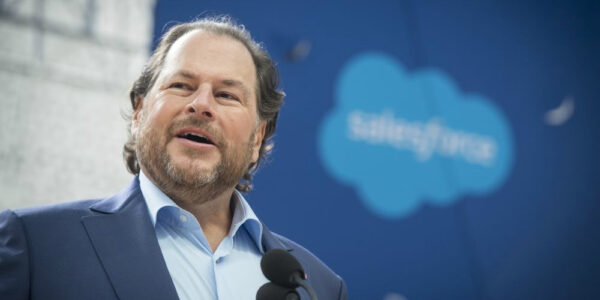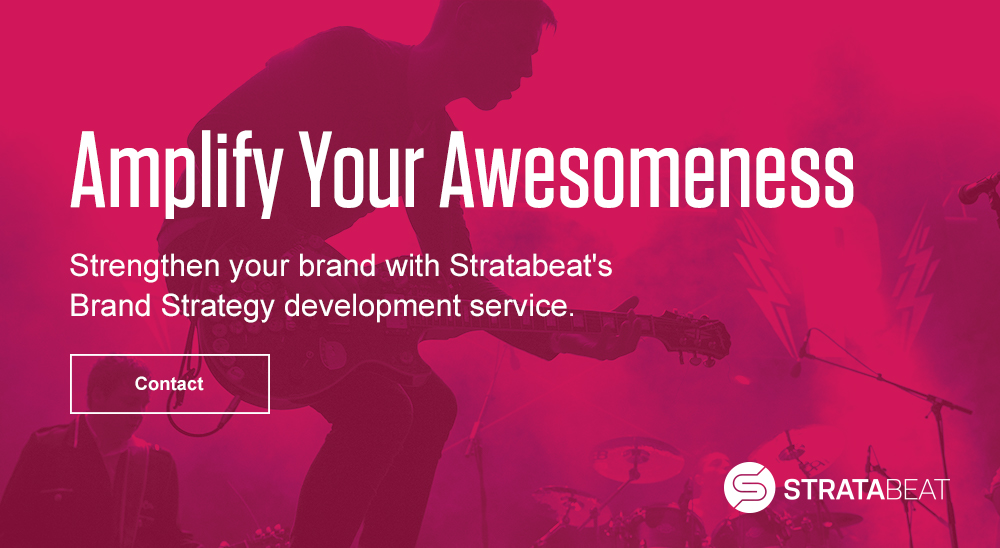The ROI of Branding

Seventy-seven percent (77%) of B2B marketing leaders say branding is critical to growth.
You know when a brand is just killing it. Think of Intel, Accenture or Salesforce. Without a doubt they are masters at the art of branding.
Salesforce, for example, has an entire team dedicated to showcasing client success, whether through its website or blog or videos. The brand enables site visitors to filter through more than 250 success stories based on product, industry, company size and company type. Salesforce has such a rabid customer/fan base, its Dreamforce annual conference typically attracts more than 170,000 attendees. It’s customer obsession like this that makes a brand head and shoulders above the rest.
And it’s not just customer obsession that makes Salesforce unique. When you consider its commitment to community engagement and philanthropic endeavors, the brand is even more lovable.
Salesforce pioneered a philanthropic approach called 1-1-1 Integrated Philanthropy: 1% of profits, 1% of employee time and 1% of products are dedicated to helping others. Since the company’s founding, Salesforce has given more than $240 million in grants, 3.5 million hours of community service, and provided product donations for more than 39,000 nonprofits and educational institutions.
The ROI of branding is undeniable. Salesforce is proof positive that strong B2B branding leads to powerful business results (the brand was the fastest enterprise software company in the market to hit $10 billion in annual revenue).
With this backdrop, let’s dive deeper into the power of B2B branding.
What is Branding?
David Ogilvy famously defined a brand as “The intangible sum of a product’s attributes: its name, packaging, and price, its history, its reputation, and the way it’s advertised.” More recently, Groundswell authors Charlene Li and Josh Bernoff stated, “Your brand is whatever your customers say it is…”.
In today’s hyper-transparent, real-time world, a brand is really all of the above – it’s both the packaging and essence of the brand, as well as the stories being told by your prospects and customers. Ninety-one percent (91%) of B2B buyers are influenced by word of mouth (WOM) in their buying decisions. According to a six-month study by Google, TNS and Ogilvy, consumers are more influenced by word of mouth in buying decisions than by print media, TV, movies and brand websites.
It’s with this in mind that you can appreciate the power of the brand. It’s not necessarily the advertising of the brand, but rather the entire brand experience that people remember. This can certainly be comprised of everything from visiting the website to talking by phone to participating in business meetings. It includes the way company representatives speak and treat others, to how they interact among themselves. It includes the logo, tagline and color palette to the messaging, website, blog, videos, emails, events, purchase process, professional services, customer service and any other brand touchpoints.
Your Brand As Religion
Martin Lindstrom, author of the books Buyology, Brand Sense and Brandwashed, conducted a study to explore the way a person’s brain responds to a brand vs. a religion. What he found was that people’s brain activity when viewing brand imagery such as from Apple and Harley-Davidson is highly similar to the brain activity when viewing religious imagery.
When done right, branding is something that can bring you and your audience together in a very powerful way.
Benefits of Branding
Build a strong B2B brand, and it can help your business in substantial, tangible ways. With a strong brand, word of mouth increases, thereby increasing your reach and awareness. Your traffic increases. As does your conversions. With a strong brand, your reputation is reinforced. With a strong brand, you can more easily attract the best employees, and you’ll naturally gain brand advocates. All of this accelerates the growth of your business.
Branding’s Impact on Conversion Rates
With effective branding, website visitors are more inclined to convert while on your site. As the neuroscientist Antonio Damasio has shows through his studies of people with damage to the part of their brain that triggers emotion (these individuals could not feel any emotion), people make decisions mostly based on emotions, not logic. They first reach a decision through emotional compulsion, and only then rationalize their decision.
If your site visitors are pre-inclined towards your brand when on your site, the likelihood of a conversion increases significantly. In essence, your branding primes them emotionally for engagement, leading to a greater volume of conversions.
With a higher conversion rate, you’re able to lower your cost per acquisition, helping you to grow faster and more profitably.
Branding’s Impact on Pricing
One powerful consequence of all of these benefits is the impact that B2B branding has on your pricing. With a strong brand, you can set higher price points, which generates greater profitability. The legendary investor Warren Buffet certainly knows this, and this is precisely why he’s a significant investor in five of the top 25 most valuable brands in the world. What Buffet knows is that the power of a brand is really the power to achieve a pricing premium.
Proof of a brand’s ability to increase the price people are willing to pay for a product is provided by Significant Objects, an experiment by writers Rob Walker and Joshua Glenn. In the experiment they purchased thrift-store, garage sale and flea market objects, packaged them with a back story and then tested their purchase price on eBay. On average, the purchase price of the items was $1.25. After being branded and placed on eBay, the average resale price was a staggering $36.12.
For example, one item was bought for 50 cents and then sold for $31. Another was bought for 50 cents and sold for $62. Yet another was bought for 33 cents and then sold for $71. Add branding or add a story, and perceived value automatically increases.
Branding’s impact on pricing can be especially potent for B2B products and services. Robert Cialdini, author of the book Influence: The Psychology of Persuasion, explains that people have a difficult time ascertaining the value of services. As a measuring stick, they tend to use price as the proof of quality. In other words, high priced B2B services are perceived as higher quality than lower priced services.
If you charge $10K for your service while your closest competitors are charging $5K, you’ll be perceived as offering higher-quality. Not every brand is positioning itself in the upper quadrant of quality, but all brands irrespective of positioning can benefit from a pricing premium.
Pricing matters. It changes the way your target audience perceives your brand, while having an outsized impact on your profitability.
Measuring the ROI of Branding
According to McKinsey, B2B companies “with brands that are perceived as strong generate a higher EBIT margin than others”. If you are looking for specific measurements by which to judge the effectiveness of your branding efforts, you have a variety of options at your fingertips:
- Surveys: Where stats are not available, consider a survey of prospects in your market. Conduct the survey as a baseline measurement prior to your rebranding initiatives and again after a period of sustained branding efforts, and then compare the results.
- Online Search Volume: Monitor search volumes of your branded terms and look for fluctuations over time. If search volumes increase, your branding efforts are paying off.
- Brand Preference: Measure your target audience’s awareness with purchase consideration. After all, awareness without purchase consideration is a weak metric. Add purchase consideration, and you’re heading in the right direction.
- Customer Acquisition: In the case that you generate a great deal of repeat business, measure your customer acquisition rate as you increase your branding efforts, and then assess the incremental value to your business through Customer Lifetime Value calculations.
- Net Promoter Score (NPS): Determine a baseline NPS and then measure changes over time.
- Loyalty: Measure your repeat business rate or customer retention rate.
Summary
Whether you’re a branding tour de force like Salesforce, or are going to be one in the future, the ROI of branding is clear for your business. If your brand is stale or outdated, develop a rebranding strategy to redefine and strengthen the brand you have today. The ripple effect on your business can be game changing – more conversions, more qualified leads and more revenue.
Focus on making your brand the best it can be, and see your business truly come alive. You’ll develop deeper bonds with your customers while building a crazy strong and crazy profitable business.
Photo Credit: David Paul Morris/Bloomberg
This post was originally published in 2014, and was updated in September 2019.

